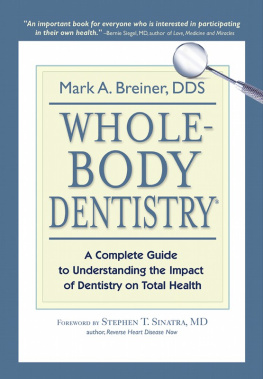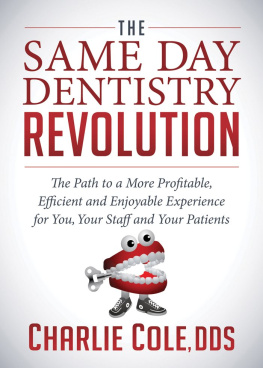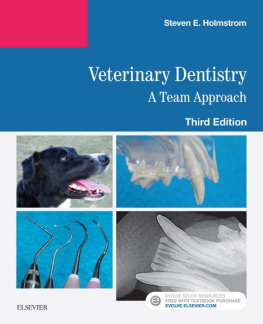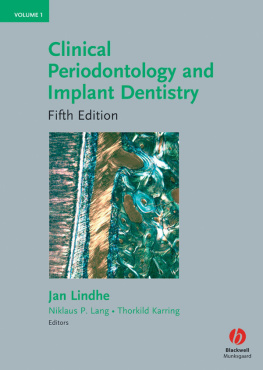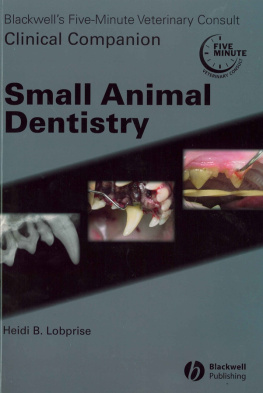WU 18.2 - Review Questions for Dentistry
Here you can read online WU 18.2 - Review Questions for Dentistry full text of the book (entire story) in english for free. Download pdf and epub, get meaning, cover and reviews about this ebook. City: Chichester;West Sussex, year: 2017;2016, publisher: John Wiley & Sons, Inc., genre: Children. Description of the work, (preface) as well as reviews are available. Best literature library LitArk.com created for fans of good reading and offers a wide selection of genres:
Romance novel
Science fiction
Adventure
Detective
Science
History
Home and family
Prose
Art
Politics
Computer
Non-fiction
Religion
Business
Children
Humor
Choose a favorite category and find really read worthwhile books. Enjoy immersion in the world of imagination, feel the emotions of the characters or learn something new for yourself, make an fascinating discovery.
- Book:Review Questions for Dentistry
- Author:
- Publisher:John Wiley & Sons, Inc.
- Genre:
- Year:2017;2016
- City:Chichester;West Sussex
- Rating:4 / 5
- Favourites:Add to favourites
- Your mark:
- 80
- 1
- 2
- 3
- 4
- 5
Review Questions for Dentistry: summary, description and annotation
We offer to read an annotation, description, summary or preface (depends on what the author of the book "Review Questions for Dentistry" wrote himself). If you haven't found the necessary information about the book — write in the comments, we will try to find it.
Review Questions for Dentistry — read online for free the complete book (whole text) full work
Below is the text of the book, divided by pages. System saving the place of the last page read, allows you to conveniently read the book "Review Questions for Dentistry" online for free, without having to search again every time where you left off. Put a bookmark, and you can go to the page where you finished reading at any time.
Font size:
Interval:
Bookmark:

This edition first published 2017 2017 by John Wiley & Sons, Ltd
Registered office:
John Wiley & Sons, Ltd, The Atrium, Southern Gate, Chichester, West Sussex, PO19 8SQ, UK
Editorial offices:
9600 Garsington Road, Oxford, OX4 2DQ, UK
The Atrium, Southern Gate, Chichester, West Sussex, PO19 8SQ, UK
1606 Golden Aspen Drive, Suites 103 and 104, Ames, Iowa 50010, USA
For details of our global editorial offices, for customer services and for information about how to apply for permission to reuse the copyright material in this book please see our website at www.wiley.com/wiley-blackwell
The right of the author to be identified as the author of this work has been asserted in accordance with the UK Copyright, Designs and Patents Act 1988.
All rights reserved. No part of this publication may be reproduced, stored in a retrieval system, or transmitted, in any form or by any means, electronic, mechanical, photocopying, recording or otherwise, except as permitted by the UK Copyright, Designs and Patents Act 1988, without the prior permission of the publisher.
Designations used by companies to distinguish their products are often claimed as trademarks. All brand names and product names used in this book are trade names, service marks, trademarks or registered trademarks of their respective owners. The publisher is not associated with any product or vendor mentioned in this book. It is sold on the understanding that the publisher is not engaged in rendering professional services. If professional advice or other expert assistance is required, the services of a competent professional should be sought.
The contents of this work are intended to further general scientific research, understanding, and discussion only and are not intended and should not be relied upon as recommending or promoting a specific method, diagnosis, or treatment by health science practitioners for any particular patient. The publisher and the author make no representations or warranties with respect to the accuracy or completeness of the contents of this work and specifically disclaim all warranties, including without limitation any implied warranties of fitness for a particular purpose. In view of ongoing research, equipment modifications, changes in governmental regulations, and the constant flow of information relating to the use of medicines, equipment, and devices, the reader is urged to review and evaluate the information provided in the package insert or instructions for each medicine, equipment, or device for, among other things, any changes in the instructions or indication of usage and for added warnings and precautions. Readers should consult with a specialist where appropriate. The fact that an organization or Website is referred to in this work as a citation and/or a potential source of further information does not mean that the author or the publisher endorses the information the organization or Website may provide or recommendations it may make. Further, readers should be aware that Internet Websites listed in this work may have changed or disappeared between when this work was written and when it is read. No warranty may be created or extended by any promotional statements for this work. Neither the publisher nor the author shall be liable for any damages arising herefrom.
Library of Congress Cataloging-in-Publication Data
Names: Devlin, Hugh, 1954- , author.
Title: Review questions for dentistry / Hugh Devlin.
Description: Chichester, West Sussex ; Hoboken, NJ : John Wiley & Sons Inc., 2016. | Includes bibliographical references and index.
Identifiers: LCCN 2015042486 | ISBN 9781118815045 (pbk.)
Subjects: | MESH: Dentistry--Examination Questions. | Oral Surgical ProceduresExamination Questions.
Classification: LCC RK57 | NLM WU 18.2 | DDC 617.60076dc23 LC record available at http://lccn.loc.gov/2015042486
A catalogue record for this book is available from the British Library.
Wiley also publishes its books in a variety of electronic formats. Some content that appears in print may not be available in electronic books.
Cover image Getty/GAnay Mutlu
Review Questions for Dentistry is accompanied by a companion website:

www.wiley.com/go/devlin/review_questions_for_dentistry
The website includes:
- Interactive Multiple Choice Questions (MCQs)
The primary purpose of any test question is to test your breadth and depth of knowledge about a subject. It may seem obvious, but reading the question carefully is mandatory. It takes time to understand what is being asked and then formulate the best response. While a particular answer may be factually correct, it may not be the best response to the question. I have also tested the application of knowledge whenever possible, so that it is not sufficient to only know a particular piece of information; the student has to appreciate how that information is used in clinical practice. I have divided the text into an introductory section and a later section which explores the subject in more detail.
An explanation of the correct answer is also added, using the best current research evidence. In the later sections, especially, supporting references are quoted. The introductory sections are suitable for preparation for the Bachelor of Dental Surgery degree, whereas the later sections have been prepared with higher examinations in mind, for example the Membership of the Joint Dental Faculties (MJDF) examination. The new format of Part 1 of the MJDF (from April 2016) will comprise 150 Single Best Answer Questions in a 3-hour examination. This book is intended to test a candidate's understanding of high-quality healthcare provision, which is also the main objective of the MJDF and the Overseas Registration Examination (ORE). At present, Part 1 of the ORE consists of Extended Matching Questions and Single Best Answer Questions.
I have used current curricula in various dental schools to develop as comprehensive a range as possible. Students have been involved in developing the questions, with their feedback being used to refine some questions. References are included to support the veracity of the correct answers whenever possible. I have varied the type and format of questions to avoid the reader becoming tired and bored with the same presentation of questions. Only one option is the correct answer, unless stated otherwise.
I hope to stimulate readers to read around the topics covered here. No one text can cover the huge variety of knowledge needed in the different disciplines of dentistry.
Questions testing the introductory aspects of the subject
Endodontics
- The ideal position for the access cavity in anterior maxillary teeth should
- conserve as much of the pulp chamber roof as possible
- be positioned close to the incisal edge
- be positioned over the cingulum of the tooth
- be positioned to allow access to the apical region of the root canal
- utilise any existing cervical labial restorations to avoid any further damage to the tooth
- Choose the option which correctly completes this sentence. The working length can be defined as the distance from a reference point on the crown of the tooth
- to the cemento-dentinal junction of the root apex or apical constriction
Font size:
Interval:
Bookmark:
Similar books «Review Questions for Dentistry»
Look at similar books to Review Questions for Dentistry. We have selected literature similar in name and meaning in the hope of providing readers with more options to find new, interesting, not yet read works.
Discussion, reviews of the book Review Questions for Dentistry and just readers' own opinions. Leave your comments, write what you think about the work, its meaning or the main characters. Specify what exactly you liked and what you didn't like, and why you think so.


